Related Research Articles

James Leonard Farmer Jr. was an American civil rights activist and leader in the Civil Rights Movement "who pushed for nonviolent protest to dismantle segregation, and served alongside Martin Luther King Jr." He was the initiator and organizer of the first Freedom Ride in 1961, which eventually led to the desegregation of interstate transportation in the United States.
Boynton v. Virginia, 364 U.S. 454 (1960), was a landmark decision of the US Supreme Court. The case overturned a judgment convicting an African American law student for trespassing by being in a restaurant in a bus terminal which was "whites only". It held that racial segregation in public transportation was illegal because such segregation violated the Interstate Commerce Act, which broadly forbade discrimination in interstate passenger transportation. It moreover held that bus transportation was sufficiently related to interstate commerce to allow the United States federal government to regulate it to forbid racial discrimination in the industry.

Theophilus Eugene "Bull" Connor was an American politician who served as Commissioner of Public Safety for the city of Birmingham, Alabama, for more than two decades. A member of the Democratic Party, he strongly opposed the Civil Rights Movement in the 1960s. Under the city commission government, Connor had responsibility for administrative oversight of the Birmingham Fire Department and the Birmingham Police Department, which also had their own chiefs.

Frederick Lee Shuttlesworth was a U.S. civil rights activist who led the fight against segregation and other forms of racism as a minister in Birmingham, Alabama. He was a co-founder of the Southern Christian Leadership Conference, initiated and was instrumental in the 1963 Birmingham Campaign, and continued to work against racism and for alleviation of the problems of the homeless in Cincinnati, Ohio, where he took up a pastorate in 1961. He returned to Birmingham after his retirement in 2007. He worked with Martin Luther King Jr. during the civil rights movement, though the two men often disagreed on tactics and approaches.
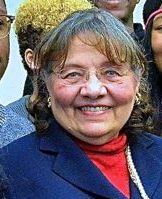
Diane Judith Nash is an American civil rights activist, and a leader and strategist of the student wing of the Civil Rights Movement.
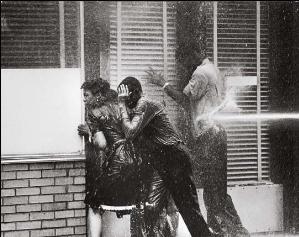
The Birmingham campaign, also known as the Birmingham movement or Birmingham confrontation, was an American movement organized in early 1963 by the Southern Christian Leadership Conference (SCLC) to bring attention to the integration efforts of African Americans in Birmingham, Alabama.
Floyd Mann was an American law enforcement official, who served as Director of the Alabama Department of Public Safety between 1959 and 1963. He is best known for his interactions with the Freedom Riders who passed through Alabama in May 1961.

The Journey of Reconciliation, also called "First Freedom Ride", was a form of nonviolent direct action to challenge state segregation laws on interstate buses in the Southern United States. Bayard Rustin and 18 other men and women were the early organizers of the two-week journey that began on April 9, 1947. The participants started their journey in Washington DC, traveled as far south as North Carolina, before returning to Washington DC.
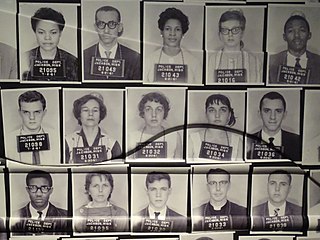
Freedom Riders were civil rights activists who rode interstate buses into the segregated Southern United States in 1961 and subsequent years to challenge the non-enforcement of the United States Supreme Court decisions Morgan v. Virginia (1946) and Boynton v. Virginia (1960), which ruled that segregated public buses were unconstitutional. The Southern states had ignored the rulings and the federal government did nothing to enforce them. The first Freedom Ride left Washington, D.C. on May 4, 1961, and was scheduled to arrive in New Orleans on May 17.
James Peck was an American activist who practiced nonviolent resistance during World War II and in the Civil Rights Movement. He is the only person who participated in both the Journey of Reconciliation (1947) and the first Freedom Ride of 1961, and has been called a white civil rights hero. Peck advocated nonviolent civil disobedience throughout his life, and was arrested more than 60 times between the 1930s and 1980s.
Carraway Methodist Medical Center was a medical facility in Birmingham, Alabama founded as Carraway Infirmary in 1908 by Dr. Charles N. Carraway. It was moved in 1917 to Birmingham's Norwood neighborhood. Its facilities were segregated according to skin color for much of its history and, in one instance, the facility refused emergency treatment to James Peck, an injured white civil rights activist who had been savagely beaten for being a Freedom Rider. This hospital was three miles from St. Vincent's. It expanded in the 1950s and 1960s and ran into financial trouble in the 2000s, declaring bankruptcy and closing in 2008.
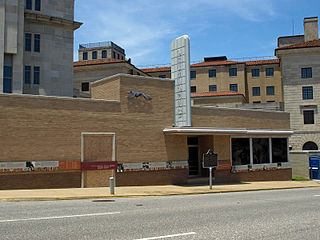
The Freedom Rides Museum is located at 210 South Court Street in Montgomery, Alabama, in the building which was until 1995 the Montgomery Greyhound Bus Station. It was the site of a violent attack on participants in the 1961 Freedom Ride during the Civil Rights Movement. The May 1961 assaults, carried out by a mob of white protesters who confronted the civil rights activists, "shocked the nation and led the Kennedy Administration to side with civil rights protesters for the first time."
James Zwerg is an American retired minister who was involved with the Freedom Riders in the early 1960s.
William E. Harbour was an American civil rights activist who participated in the Freedom Rides. He was one of several youth activists involved in the latter actions, along with John Lewis, William Barbee, Paul Brooks, Charles Butler, Allen Cason, Catherine Burks, and Lucretia Collins.
Henry "Hank" James Thomas is an African American civil rights activist and entrepreneur. Thomas was one of the original 13 Freedom Riders who traveled on Greyhound and Trailways buses through the South in 1961 to protest racial segregation, holding demonstrations at bus stops along the way.
This is a timeline of the 1947 to 1968 civil rights movement in the United States, a nonviolent mid-20th century freedom movement to gain legal equality and the enforcement of constitutional rights for People of Color. The goals of the movement included securing equal protection under the law, ending legally-established racial discrimination, and gaining equal access to public facilities, education reform, fair housing, and the ability to vote.
Gary Thomas Rowe Jr., known in Witness Protection as Thomas Neil Moore, was a paid informant and agent provocateur for the FBI. As an informant, he infiltrated the Ku Klux Klan, as part of the FBI's COINTELPRO project, to monitor and disrupt the Klan's activities. Rowe participated in violent Klan activity against African Americans and civil rights groups.

The Greyhound Bus Station at 219 N. Lamar St., Jackson, Mississippi, was the site of many arrests during the May 1961 Freedom Rides of the Civil Rights Movement. The Art Deco building has been preserved and currently functions as an architect's office.
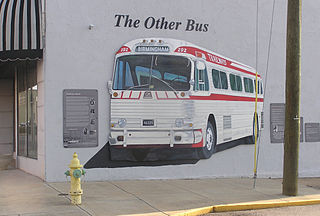
On 14 May 1961, during the American Civil Rights Movement, a mob bombed a bus filled with civil rights Freedom Riders when two buses were setting out to travel the south in protest of their civil rights following the Supreme Court case saying bus segregation was unconstitutional.

On 14 May 1961, during the American Civil Rights Movement, a mob of Ku Klux Klan members attacked civil rights Freedom Riders in Birmingham, Alabama after two buses were setting out to travel the south in protest of their civil rights following the Supreme Court case saying bus segregation was unconstitutional.
References
Notes
- 1 2 3 Arsenault 2006, pp. 103.
- 1 2 Person 2005.
- ↑ Arsenault 2006, pp. 104.
- ↑ Arsenault 2006, pp. 112.
- ↑ Arsenault 2006, pp. 120.
- 1 2 Arsenault 2006, pp. 149.
- ↑ Arsenault 2006, pp. 150.
- ↑ Peck 1979.
- 1 2 Branscome 2011.
- ↑ Arsenault 2006, pp. 155.
Sources
- Arsenault, Raymond (2006). Freedom Riders: 1961 and the Struggle for Racial Justice. New York, New York: Oxford University Press. pp. 103–175. ISBN 9780195136746.
- "Freedom Riders". The University of Mississippi. 2005. Archived from the original on 2 April 2011. Retrieved 7 April 2011.
- "Eyes on the Prize Interview: Interview with James Peck". Blackside, Inc. October 26, 1979. Archived from the original on 31 May 2010. Retrieved 7 April 2011.
- Branscome, Jeff (1 April 2011). "Journalist, photographer reunite with activists". The Freelance Star. Fredericksburg, Virginia. Archived from the original on 27 September 2012. Retrieved 7 April 2011.